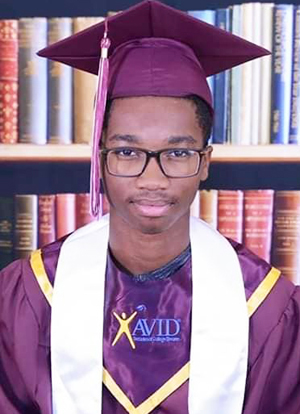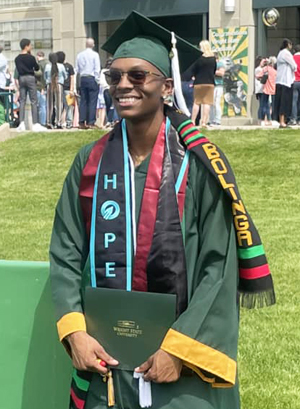
By Fletcher Word
The Truth Editor
On January 29, 2020, just before the COVID-19 pandemic began to play havoc with schools and students’ plans for completing their educations, the 2020 class of Scott High School students and their parents or guardians were called to the school for an event in the fieldhouse.
They had not been told what the event was about so the universal surprise, amazement and joy that broke out in the audience was overwhelming when the speaker, Pete Kadens (a Toledo native/Chicago area entrepreneur) announced that he would be funding college or trade school for all the graduating seniors and one of their parents.
In all, 108 students in the class of 2020 were given the opportunity to take advantage of a free higher education and, after that, the benefits were extended to several following classes. The duties of assisting the students in their quest for higher education and tracking their progress fell to a newly established non-profit organization, HOPE Toledo and its president/CEO, Rev. John Jones.
HOPE Toledo was the first fully funded two-generation program in the United States. That meant that graduates of that 2020 class and a parent could attend 4.5 years of an accredited university, community college or trade school for free, including tuition, room and board, books and fees. The program also includes wraparound support services and coaching.
This spring the first two students in the class of 2020 graduated from college. Wakeso Peterson, Jr. graduated from Bowling Green State University with a bachelor of science degree in architecture and environmental design and Mario Purifie, Jr. graduated from Wright State University with a bachelor of arts degree in crime and justice studies with a double minor in legal studies and deaf studies.
While Peterson and Purifie are the first two four-year graduates in the class of 2020, there has already been more success, says, Jones, and much more success to come.
Of the 108 graduates in that class, 62 entered college or a trade school the following fall. Five parents of those graduates did also while another five parents entered some sort of program later in the year. Of the students who entered college or a trade program, nine have received an associate’s degree or a trade certification. About 25 students in that cohort are still working on degrees, says Jones.

To assist in tracking the outcomes of HOPE Toledo, the staff solicited the assistance of the Northwestern University’s Institute for Policy Research. The report, which was completed in December 2023, focused on the progress of Scott classes 2020, 2021, and 2021. The class of 2023 was not included because students had not had the chance to complete a full year of college.
The highlights of the study can be examined in three different areas: enrollment, persistence and completion. The study found, for example, that post-HOPE Toledo students enrolled in college at higher rates than pre-HOPE Toledo students (Scott classes 2015-2019). HOPE Toledo “led to a 28 percent increase in college enrollment in the first year after graduation among Scott High School graduates.”
Persistence rates were higher for post-HOPE Toledo students than for pre-HOPE Toledo students in that post-HOPE Toledo students were 38 percent more likely to complete at least one term of college in the first year following graduation than pre-HOPE Toledo students.
It’s too early to fully assess completion rates for pre and post-HOPE Toledo students. At the time of the report only one student in each group had received a post secondary education certificate, however, a number of post secondary institutions are not included in the National Student Clearinghouse (NSC) database used in the study so the comparisons will probably always be lacking sufficient information.
Forty-three percent of post HOPE Toledo students enrolled in a postsecondary institution compared to 33 percent of pre-HOPE Toledo students. More post HOPE Toledo students enrolled in four-year institutions (73 percent) and fewer in two-year institutions (27 percent) compared to pre-HOPE Toledo student 63 and 37 percent respectively).
The conclusion of the report conducted by the Institute for Policy Research noted that while it is still a bit early to draw complete conclusions about the full effect of the HOPE Toledo program, it is already evident that that the program has worked as intended.
“Short and medium-term indicators are promising: students who had access to the program had higher enrollment and persistence rates than students who did not.”
